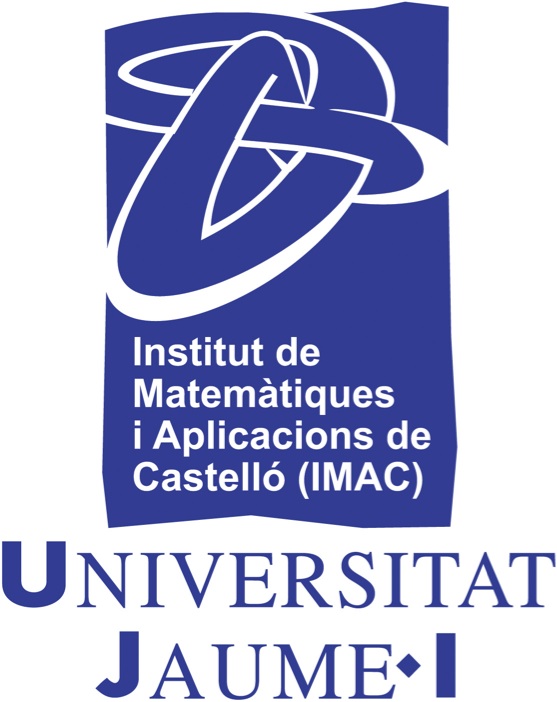|
A Symposium on
Splitting
Methods for Differential Equations
Institut de Matemàtiques i Aplicacions de Castelló (IMAC) September 6-8, 2010
Castellón, Spain |
 |
Splitting methods constitute a widely used tool of the numerical integration of ordinary differential equations (ODEs). Most often they are the option of choice when the vector field associated with the ODE can be decomposed into several pieces and each of them is integrable.
Some of the advantages that splitting methods possess can be summarized as follows:
- They are usually simple
to implement.
- They are, in general, explicit.
- Their storage requirements are quite modest. The algorithms are sequential and the solutions at intermediate stages are stored in the solution vectors. This property can be of great interest when they are applied to partial differential equations (PDEs) previously semidiscretized.
- There exist in the literature a large number of specific methods tailored for different structures.
- They preserve structural properties of the exact solution, thus conferring to the numerical scheme a qualitative superiority with respect to other standard integrators, especially when long time intervals are considered. Examples of these structural features are symplecticity, volume preservation, time-symmetry and conservation of first integrals. In this sense, splitting methods constitute an important class of geometric numerical integrators.
In addition, the numerical solution obtained by splitting schemes can be seen as the exact solution to a perturbed system of ODEs possessing the same geometric properties as the original system. This backward error interpretation has direct implications for the qualitative behaviour of the numerical solution as well as for the error propagation along time.
The intention of the symposium is to provide a platform for exchanging new ideas and results in the development and analysis of splitting methods for the time integration of both ordinary and partial differential equations.
The symposium will take place at the Institut de Matemàtiques i Aplicacions de Castelló (IMAC), Universitat Jaume I, in Castellón (Spain). It will start on Monday September 6 and will end on Wednesday September 8 at midday.
PARTICIPANTS
- Philipp Bader (Valencia)
- Philippe Chartier (Rennes)
- Siu A. Chin (Texas A&M)
- Stéphane Descombes (Nice)
- Fasma Diele (Bari)
- Erwan Faou (Rennes)
- Juergen Geiser (Berlin)
- M. Atakan Gurkan (Leiden)
- Reinout Quispel (La Trobe)
- Tim Sheng (Baylor)
- Mechthild Thalhammer (Innsbruck)
- Gilles Vilmart (Lausanne)
- Pura Vindel (Castellón)
ORGANIZING
COMMITTEE
- Sergio Blanes (Universidad
Politécnica de Valencia)
- Beatriz Campos (Universitat Jaume I)
- Fernando Casas (Universitat Jaume I)
- Cristina Chiralt (Universitat Jaume
I)
- Ander Murua (Universidad del
País Vasco)
USEFUL INFORMATION
- Venue
- How to arrive
- Accommodation. We have booked a
number of rooms for the participants at Hotel Luz. It is
conveniently located near the railway/bus station and TRAM stop. Just
exit the station through the north gate and cross the street.
- Internet
access. You can access to the
Internet via Eduroam or via the UJI network. In the later case you will
need to instal a VPN client programme. Detailed instructions can be
found here.
You
have
the
username
and password of your account in your badge.
- Castellón and surroundings
- Institut de Matemàtiques i
Aplicacions de Castelló (IMAC).
This is a mathematical
research institute which recently initiated its activities in
Castellón.


